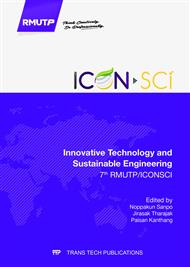[1]
N. Arabzadeh, The effect of drought stress on soluble carbohydrate (sugar) in two species of Haloxylon pericum and Haloxylon aphyllum, Asian J. Plant Sci. 11 (1) (2012) 44-51.
DOI: 10.3923/ajps.2012.44.51
Google Scholar
[2]
T. Boriboonkaset, C. Theerawitaya, N. Yamada, A. Pichakum, K. Supaibulwatana, S. Cha-um, T. Takabe, C. Kirdmanee, Regulation of some carbohydrate metabolism-related genes starch and soluble sugar contents photosynthetic activities and yield attributes of two contrasting rice genotypes subjected to salt stress, Springer-Verlag Wien, Protoplama. 250 (2013).
DOI: 10.1007/s00709-013-0496-9
Google Scholar
[3]
J.O. Borevitz, Y. Xia, J. Blount, R.A. Dixon, C. Lamb, Activation tagging identifies a conserved MYB regulator of phenylpropanoid biosynthesis, Plant Cell. 12 (2000) 2383-2393.
DOI: 10.1105/tpc.12.12.2383
Google Scholar
[4]
K.Y. Sakakibara, T. Tohge, F. Matsuda, R. Nakabayashi, H. Takayama, R. Niida, A.W. Takahashi, E. Inoue, K. Saitoa, Comprehensive flavonol profiling and transcriptome coexpression analysis leading to decoding gene–metabolite correlations in Arabidopsis, Plant Cell 20 (8) (2008).
DOI: 10.1105/tpc.108.058040
Google Scholar
[5]
S. Kim, S. Lee, I. Lee, Alteration of phytotoxicity and oxidant stress potential by metal oxide nanoparticles in Cucumis sativus, Water Air Soil Pollut. 223 (2012) 2799-2806.
DOI: 10.1007/s11270-011-1067-3
Google Scholar
[6]
H. Oloumi, R. Soltaninejad, A. Baghizadeh, The comparative effects of nano and bulk size particles of CuO and ZnO on glycyrrhizin and phenolic compounds contents in Glycyrrhiza glabra L. seedlings, Ind. J Plant Physiol. 20 (2) (2015) 157-161.
DOI: 10.1007/s40502-015-0143-x
Google Scholar
[7]
K. Sompornpailin, S. Kanthang, tobacco expressing PAP1 increases the responses to par and UV-A by enhancing soluble sugars and flavonoids and elevating plant protections, Pak. J. Bot. 47 (2) (2015) 595-602.
Google Scholar
[8]
H. Shou, P. Bordallo, J. Fan, J. M. Yeakley, M. Bibikova, J. Sheen, K. Wang, Expression of an active tobacco mitogen-activated protein kinase enhances freezing tolerance in transgenic maize, Proc. Natl. Acad. Sci. USA. 101 (2003) 3298-3303.
DOI: 10.1073/pnas.0308095100
Google Scholar
[9]
J. A. Harborne, Phytochemical methods a guide to modern techniques of plant analysis, (1998).
Google Scholar
[10]
D.M. Hodges, J.M. Delong, C.F. Forney, R.K. Prange, Improving the thiobarbituric acid-reactive-substances assay for estimating lipid peroxidation in plant tissues containing anthocyanin and other interfering compounds, Planta 207 (1999) 604-611.
DOI: 10.1007/s004250050524
Google Scholar
[11]
C.O. Dimkpa, J.E. McLean, D.E. Latta, E. Manango´n, D.W. Britt, W.P. Johnson, M.I. Boyanov, A.J. Anderson, CuO and ZnO nanoparticles: phytotoxicity, metal speciation, and induction of oxidative stress in sand-grown wheat, J. Nanopart. Res. 14 (2012).
DOI: 10.1007/s11051-012-1125-9
Google Scholar
[12]
P. Mahajan, S.K. Dhoke, A. S. Khanna, Effect of nano-ZnO particle suspension on growth of mung (Vigna radiata) and Gram (Cicer arietinum) seedlings using plant agar method, J. Nanotech. 2011 (2011).
DOI: 10.1155/2011/696535
Google Scholar
[13]
A. Michalak, Phenolic compounds and their antioxidant activity in plants growing under heavy metal stress, Polish J. Environ. Stud. 15 (2006) 523-530.
Google Scholar
[14]
J. Lv, S. Zhang, L. Luo, J. Zhang, K. Yangc, P. Christied, Accumulation speciation and uptake pathway of ZnO nanoparticles in maize, Environ. Sci.: Nano. 2 (2014) 68-77.
DOI: 10.1039/c4en00064a
Google Scholar


